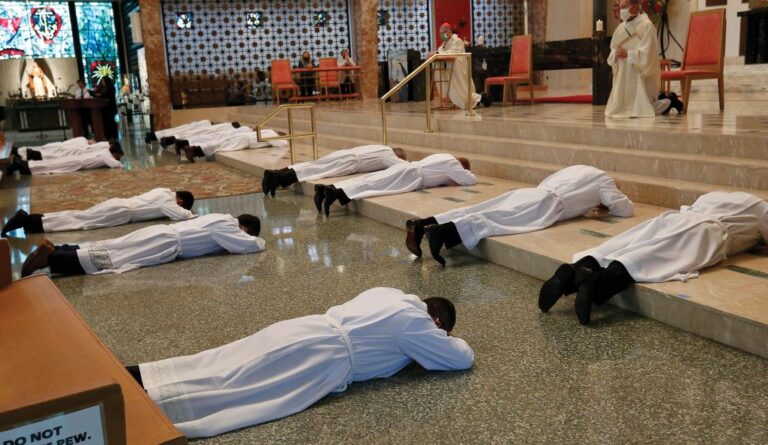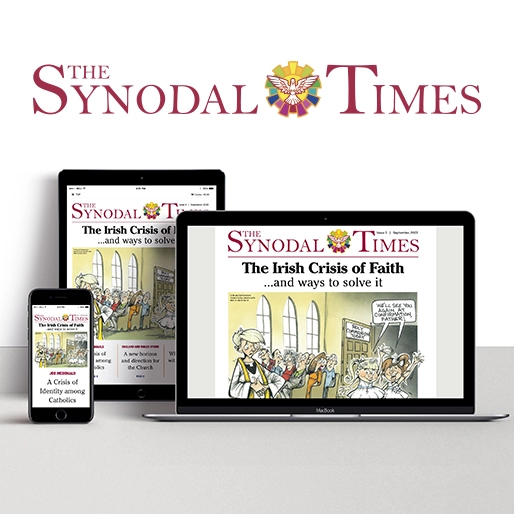“What earlier generations held as sacred, remains sacred and great for us too, and it cannot be all of a sudden entirely forbidden or even considered harmful” – many will be familiar with Pope Benedict’s widely trumpeted quote encapsulating the anguish that Catholics currently face in a world that is no longer receptive to the presence of God and moreover, chastises those who are.
Although strategically unveiled by the Pope Emeritus with the intent of providing insight into the sustained decline of Christian practice in the West, it contextually also bears relevance to the hitherto monolith of the Church – the once holy priesthood.
The mere topic of the Catholic priesthood elicits a gamut of emotions from the faithful. Is the priesthood an unconditional necessity in our current climate? Are laws pertaining to celibacy too austere and unjust by today’s societal standards and moreover is such a deprivation of harm to the individual? Fundamentally, once sacred and inviolable, the importance of the priesthood is gradually becoming moot and its future mired with uncertainty.
Witnessed
An example of this new conditioning can be witnessed in the results of Germany’s synodal process – the results may come as a shocking revelation to traditionalists, but to others it is a window into the revised convictions of Catholics in Europe – and these stances are proliferating. As many already know, in October of last year, the Church’s once sacrosanct bulwark, the priesthood, came tantalisingly close to being abolished in accordance with the views of the German synod’s participants.
The results of the ensuing German synod evidently petrified the nation’s bishops enough to force them to abruptly move to derail the listening process and extend it to 2023 – presumably enough time for them to recuperate and catch their breath before being subjected to another round of quickfire reform endorsed by the German faithful.
The priesthood still currently stakes its claim as the distinctive form of Catholic ministry. Diaconates have now been introduced in certain dioceses across Ireland, but bishops have always been quick to reassure that nobody is invading anybody’s territory and as of now deacons in the Church are not being trained to replace priests – they are being trained to provide their own unique brand of pastoral ministry and simply be deacons in their own right.
We’re currently in an agonisingly flux period for the Church – we know that change will manifest but we are truly unaware of the forms and consequences of this change. Vocations Sunday is still underlined with the utmost of enthusiasm by clergy, and parish bulletins across the country display advertisements urging any young man who feels that they have been bequeathed with something to offer the Church to get in contact with their diocesan director of vocations.
But parallel to this vestige of tradition is a growing cohort of Catholics in favour of reimaging the once impenetrable fortress and with these developments in mind, where does it leave the few aberrations who are still possibly discerning a vocation to the Holy Church? The official Vatican line continues to be ministry through the medium of vocation, but the populist line is increasingly gaining support. Caught in a cacophony of voices, the prospective seminarian has become entangled in a web of confusion, trying earnestly to decide which one accurately conveys the Church’s future.
Realism is a crucial ingredient in the mind of anyone considering a vocation in the Church. The Church in Ireland should have one objective for the next ten years and that is to ensure its tangible existence for the future – anything else must be considered overreach given the complications that the entity has plunged itself into.
Once bustling national seminaries, metaphors for the Catholic pride of the nation, have now either been closed or attempting to survive on limited numbers walking their hallowed halls every year. The unquestioned deference is over; the national culture of Catholicism dissipated. For the first time, men must go searching for their vocation in the wilderness.
Discern
Those who manage to discern something in this climate will soon realise that a priest may not be the epicentre of the parish or community as he once was, but nevertheless society’s expectations now far exceed what is reasonably possible for one person to do without becoming chronically exhausted. There are less priests, more roles for them to perform as individuals and even less respect for their services in society. The white collar has been permanently stained in the last few decades and when exposed in public, could potentially provoke hostility inspired by tragedies that took place decades long before one’s birth attributable to a societal trauma that will always persist. Knowing what we know now, it’s justifiably too heavy a cross for some to carry.
Reconcile
If you do manage to reconcile yourself with the first tribulation, you’ll soon find that another of immensely greater proportions is there to greet you: the vow of celibacy. I often found that in the past, men were quite literally moulded for the priesthood – it was easier too. The local primary school in the parish was most likely co-educational, but these were quickly separated just before the chaotic era of exploration and awkwardness took hold. Dances, at times regulated by the local priest, were the only way in which one could meet a potential suitor. The lack of choices and rigid sexual norms ensured that men were engaged in a process of conditioning for the role before they even developed a cognisance of their personality.
Even if a vow of celibacy has been personally volunteered by a seminarian, the desire to be loved in some form is innate in all humans and we have reluctantly come to accept over time in this country that these urges are inherent in all human beings and unnatural to suppress. With sexuality almost regarded as a characteristic in society’s current fabric, what type of person is willing to disavow what currently dominates discourse and fixates popular culture?
In the past, priests were in a better position to sooth this ailment. All channels ran through the man’s ministry as the de facto leader of the town – along with a certain prestige. Invitations to family homes on a Sunday were the norm; compare this with the attitude toward priests today, it would come as a shock to me if more than a third of the town knew the name of their local priest. Celibacy has been a legally binding canon law policy for centuries, but I feel that now more than ever that the implications are only now being felt to their fullest extent for priests who uphold.
Additionally, a priest’s role has become explicitly transactional to a younger generation – you quite simply perform the sacraments for each member of the family and get prepared to most likely never see them outside of these events. Although this type of “Catholic” is now the commonest variety found, they’re also the least likely to question nor refute the sacramental validity of a deacon performing a baptism, wedding or funeral if a priest became ill and there was no replacement – only the devout minority would take exception. There is a paradoxical element to making sure your shop front is clean and presentable primarily for the purpose of those who are wholeheartedly ambivalent to Church affairs.
In spite of these stark figures and snares, certain orders have experienced a growth in interest and a greater influx of novices in their ranks. The advantage of this is that the novices may be able to fully immerse themselves in a certain strand of Catholicism that has remained untampered for centuries – a true and authentic experience.
Candidates
Many of these orders rely on a nominal number of candidates per year to survive, and it appears that they are meeting these numbers. With this in mind, the future appears to be a lot brighter for devotees of a traditional flavour or strand of Catholicism when compared to a fixed parish structure. It may also mean that churches belonging to orders will withstand the enduring onslaught while parish churches across the country close en masse. Some have even said that the only crisis exists within the parish structure – but given the importance of the parish configuration to Catholics across the country, a failing parish structure will ensure that Catholics nationwide will be frozen out of celebrations if there is no priest available to offer their ministry.
Ominously, when I reflect on the future of the priesthood, my mind immediately focuses on the tagline of a popular horror film, “Who will survive and what will be left of them” – or in this context – “What will survive and what will be left of it?”. Who’d be a priest, eh? Well, maybe in the future the option won’t be there for you to decide.



